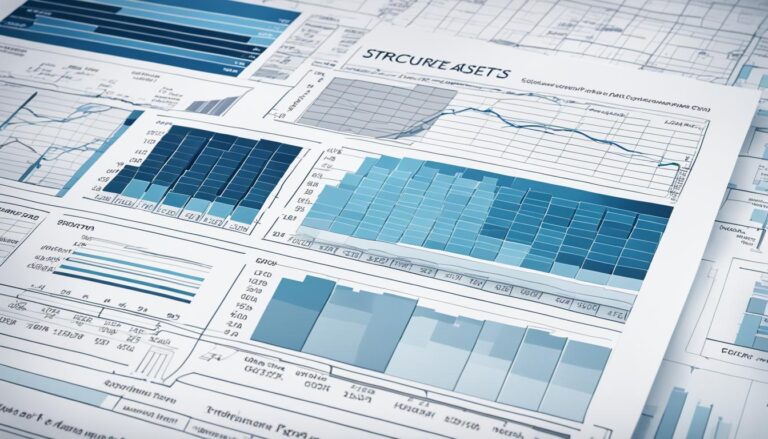Quantitative Analysis Tools
Imagine you are a financial analyst tasked with predicting stock prices. By utilizing quantitative analysis tools such as regression analysis, you can reveal patterns in historical data to make informed forecasts.
However, this is just the tip of the iceberg when it comes to leveraging the power of quantitative tools in decision-making. Through the application of statistical software, hypothesis testing, and time series analysis, you can unveil deeper insights and drive more accurate predictions.
The key lies in understanding how these tools work together harmoniously to enhance your analytical capabilities and strategic decision-making.
Key Takeaways
- Quantitative analysis tools aid in systematic data insight extraction.
- Data visualization simplifies interpretation of complex data trends.
- Regression analysis helps in examining variable relationships effectively.
- Statistical software streamlines data interpretation processes for enhanced modeling.
Understanding Quantitative Analysis Tools
Quantitative analysis tools are essential for extracting meaningful insights from data in a precise and systematic manner. However, along with their benefits, these tools come with interpretation challenges that need to be addressed. To tackle these challenges effectively, it's important to employ specific data interpretation techniques.
Interpretation challenges often arise due to the complexity of the data being analyzed. With large datasets, identifying patterns and trends can be overwhelming. Utilizing techniques such as regression analysis or hypothesis testing can help in making sense of the data. These techniques provide a structured approach to interpreting data, allowing for more accurate and reliable conclusions.
Data interpretation techniques play a crucial role in ensuring the accuracy of your analysis. By employing methods like data visualization, descriptive statistics, and correlation analysis, you can enhance your understanding of the data and derive actionable insights. These techniques help in organizing and presenting data in a way that's easy to comprehend, enabling you to make informed decisions based on the results of your analysis.
Importance of Data Visualization
Data visualization plays an important role in presenting complex data in a clear and easily understandable format, aiding in effective analysis and decision-making. When it comes to the importance of data visualization, consider the following:
- Visual Storytelling: Visualizations have the power to tell a story that raw data alone can't convey. Through charts, graphs, and infographics, complex datasets can be transformed into compelling narratives, making it easier for you to understand the significance of the information presented.
- Data Interpretation: Visualization helps in interpreting data by highlighting trends, patterns, and outliers that might go unnoticed in raw numbers. By representing data visually, you can quickly grasp key insights, facilitating a deeper understanding of the underlying information.
- Effective Communication: Visual representations simplify the communication of findings to stakeholders. Whether presenting to colleagues, clients, or decision-makers, well-crafted visualizations enhance comprehension and engagement, leading to more informed discussions and decisions.
Exploring Regression Analysis
Beginning your exploration of regression analysis involves understanding how variables interact and influence each other in a statistical model. Regression analysis is a powerful tool used in predictive modeling to examine the relationship between a dependent variable and one or more independent variables.
One critical aspect of regression analysis is variable selection, where you choose which independent variables to include in the model to best predict the dependent variable. This process requires careful consideration to avoid overfitting or underfitting the model.
Leveraging Statistical Software
When utilizing statistical software for quantitative analysis, efficiency and accuracy are paramount considerations. Leveraging statistical software can greatly enhance your ability to conduct complex statistical modeling and streamline the process of data interpretation.
Here are three key points to take into account:
- Automation: Statistical software allows you to automate repetitive tasks, such as data cleaning and analysis, saving you valuable time and reducing the risk of human error in the process. By automating these tasks, you can focus more on the actual interpretation of results rather than spending time on manual computations.
- Visualization Tools: Many statistical software packages come equipped with powerful visualization tools that can help you present your findings in a clear and concise manner. These tools enable you to create informative graphs, charts, and plots that enhance data interpretation and make complex statistical models more accessible.
- Statistical Libraries: Statistical software often provides access to a wide range of statistical libraries and functions, allowing you to implement advanced statistical techniques with ease. Leveraging these libraries can help you build sophisticated models and perform in-depth data analysis efficiently.
Application of Hypothesis Testing
To effectively apply hypothesis testing in quantitative analysis, understanding the principles of statistical inference is fundamental. When conducting hypothesis tests, two critical errors must be taken into account: Type I error, which involves incorrectly rejecting a true null hypothesis, and Type II error, which pertains to failing to reject a false null hypothesis. These errors highlight the importance of interpreting results cautiously.
In hypothesis testing, confidence intervals play an essential role in estimating the range in which the true population parameter lies. Additionally, p-values indicate the strength of the evidence against the null hypothesis. A lower p-value suggests stronger evidence against the null hypothesis.
Benefits of Time Series Analysis
Time series analysis provides valuable insights into understanding patterns and trends in data over time.
- Forecasting Trends: By analyzing historical data points, time series analysis allows you to identify and predict future trends. This can be extremely useful for businesses to make informed decisions and plan strategically based on upcoming patterns.
- Predictive Modeling: Time series analysis enables the creation of predictive models that can forecast future outcomes. This is beneficial in various fields such as finance, weather forecasting, and stock market predictions.
- Pattern Recognition and Anomaly Detection: Through time series analysis, patterns within the data can be recognized, helping you understand recurring behaviors. Additionally, anomalies or outliers can be detected promptly, alerting you to potential errors or irregularities in the dataset.
Incorporating time series analysis into your data analysis toolkit can enhance your ability to make data-driven decisions, improve planning processes, and gain a competitive edge by anticipating future trends accurately.
Maximizing Decision Trees
Maximizing the effectiveness of decision trees involves optimizing their structure and parameters to enhance predictive accuracy and interpretability. When optimizing splits, the goal is to find the best way to divide the data at each node, maximizing the information gain or Gini impurity to create more homogeneous child nodes. Additionally, tree pruning techniques help prevent overfitting by simplifying the tree structure.
To further illustrate the importance of optimizing decision trees, consider the table below:
| Optimization Technique | Description | Pros | Cons |
|---|---|---|---|
| Optimizing Splits | Find best way to divide data | Increases predictive accuracy | May lead to complex trees |
| Tree Pruning | Simplify tree structure | Prevents overfitting | May decrease predictive power |
Conclusion
As you explore deeper into the domain of quantitative analysis tools, you'll discover a treasure trove of insights waiting to be unearthed. Just like a skilled navigator charting a course through uncharted waters, these tools can guide you towards making informed decisions and revealing hidden patterns within your data.
Embrace the power of data visualization, regression analysis, statistical software, hypothesis testing, time series analysis, and decision trees to navigate the complexities of data analysis with confidence and precision.







